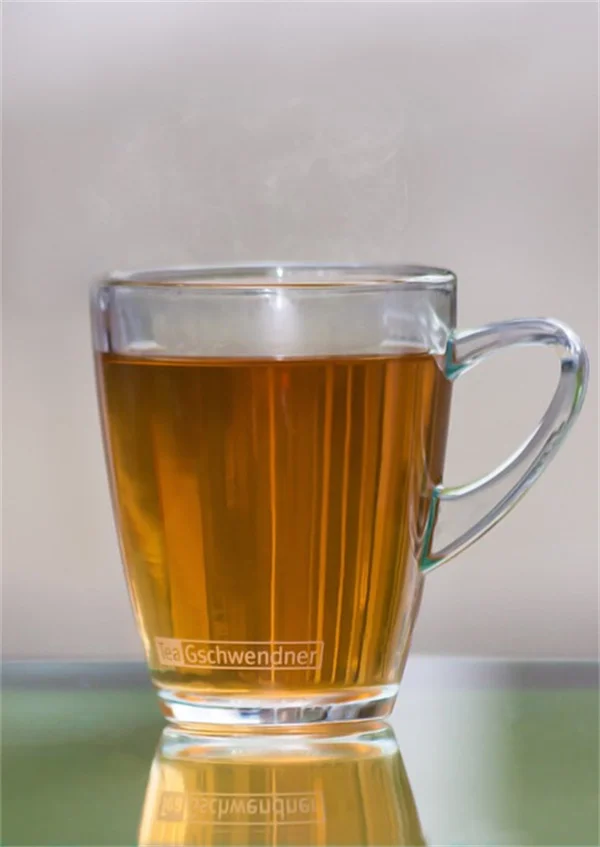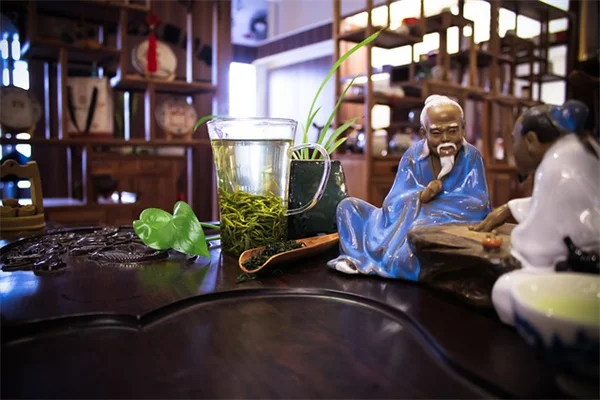New Breast Cancer Screening Guidelines: Start at 40 Now
Advertisement
What are the new breast cancer screening guidelines? The USPSTF now recommends all women start mammograms at age 40 instead of 50, repeating every two years until 74. This change could save 20% more lives annually! I've seen firsthand how early detection transforms outcomes - it's like catching a typo before hitting send versus after the email blast.Here's why this matters for you: breast cancer doesn't wait until you're old enough to screen. The updated guidance reflects what doctors like me have witnessed - more women in their 40s needing treatment that could've been simpler if caught earlier. We're talking smaller surgeries, milder chemo, better survival rates.The panel also highlights critical gaps: Black women face 40% higher mortality rates despite lower incidence, and we still need better solutions for dense breasts (which make mammograms trickier). While the science evolves, one thing's clear - starting screenings at 40 gives you the best shot at catching problems early when they're most treatable.
E.g. :Ozempic and Wegovy May Lower Cancer Risk: New Study Reveals How
- 1、Breaking Down the New Breast Cancer Screening Rules
- 2、Why These Changes Matter Right Now
- 3、Your Personal Breast Health Playbook
- 4、Special Considerations You Should Know
- 5、Making Sense of the Statistics
- 6、Putting It All Together
- 7、Understanding the Bigger Picture
- 8、The Emotional Side of Screening
- 9、Technology Changing the Game
- 10、Men Need to Pay Attention Too
- 11、Making Prevention Part of Your Lifestyle
- 12、FAQs
Breaking Down the New Breast Cancer Screening Rules
What's Changed in the Guidelines?
Guess what? The medical experts just made getting mammograms easier for younger women! The USPSTF now says all women should start regular breast cancer screenings at age 40 - that's a full decade earlier than before. We're talking about mammograms every two years until you hit 74.
Here's why this matters: imagine catching cancer early when it's about the size of a pea versus waiting until it's lemon-sized. The difference in treatment options and survival rates is huge! The panel estimates this change could save 20% more lives annually. That's like filling 8,600 extra seats at a baseball game with survivors each year!
Who Should Pay Attention?
These guidelines apply to you if:
- You're between 40-74 years old
- Have average breast cancer risk
- Have dense breasts (though they're still figuring out the best approach here)
- Have a family history of breast cancer
But wait - did you know Black women face a tougher battle? Despite getting breast cancer less often than white women, they're 40% more likely to die from it. The experts are shouting from the rooftops that we need better solutions for this racial gap.
Why These Changes Matter Right Now
 Photos provided by pixabay
Photos provided by pixabay
The Life-Saving Math Behind Screening
Let me hit you with some numbers:
| Age Group | Previous Screening Start | New Screening Start | Potential Lives Saved |
|---|---|---|---|
| 40-49 | Case-by-case | Routine for all | 1 in 1,000 women |
| 50-74 | Routine | No change | 1 in 600 women |
Dr. Casavant, an OB/GYN I spoke with, put it perfectly: "Finding cancer early is like catching a train before it leaves the station - your treatment options are wider and more effective." He's seen patients go from Stage III to clean bills of health because of timely mammograms.
What About Older Women?
Here's something interesting - the guidelines stop at 74. Why? Because the research gets fuzzy for older populations. It's not that screening becomes dangerous, but we don't have enough data to say "keep going" with confidence. Think of it like driving at night without headlights - possible, but not recommended.
Your Personal Breast Health Playbook
Beyond Mammograms: Daily Defense Strategies
While screenings are crucial, let's talk about what you can do today to stack the odds in your favor:
First up - move that body! You don't need to train for a marathon. Start with walking meetings at work or dancing while cooking dinner. Just 150 minutes of moderate exercise weekly (that's 21 minutes daily) can lower your risk by 10-20%.
Now about food - here's my grocery list hack: shop the rainbow. Fill your cart with colorful fruits and veggies first, then add lean proteins. My nutritionist friend calls this "eating the rainbow" - and no, Skittles don't count!
 Photos provided by pixabay
Photos provided by pixabay
The Life-Saving Math Behind Screening
Let's be real - who among us hasn't enjoyed a glass of wine (or three) during stressful times? But here's the sobering truth: each daily drink increases breast cancer risk by 7-10%. Try swapping every other drink for sparkling water with lime - your liver will thank you!
And smokers - I get it, quitting is harder than resisting free office donuts. But consider this: within 5 years of quitting, your breast cancer risk drops halfway back to normal. That's faster than most New Year's resolutions last!
Special Considerations You Should Know
The Dense Breast Dilemma
If you've been told you have dense breasts (about 40% of women do), listen up. It's like trying to spot a snowball in a snowstorm - mammograms become less reliable. The experts admit they're still figuring out the best supplemental tests, but don't let that stop you from getting your regular screenings.
Did you know breastfeeding can be protective? While we're not exactly sure why, researchers think it might be because it delays menstrual cycles. Either way, it's one more reason to feel good about those 3 AM feedings!
When Family History Comes Knocking
If breast cancer runs in your family, these guidelines are just the starting line. You might need earlier or more frequent screenings - have that conversation with your doctor. I've seen patients bring family trees to appointments, which helps doctors spot patterns.
Remember Angelina Jolie's preventive surgeries? While extreme, they highlight an important point: knowledge is power. Genetic testing can reveal if you carry high-risk mutations like BRCA. It's not right for everyone, but worth discussing.
Making Sense of the Statistics
 Photos provided by pixabay
Photos provided by pixabay
The Life-Saving Math Behind Screening
The data shows 19.6 breast cancer deaths per 100,000 women annually. But what does that really mean? Picture a football stadium with 50,000 women - about 10 would statistically die from breast cancer each year. Early detection could save 2 of those lives with these new guidelines.
But here's a question: why do Black women face worse outcomes despite lower incidence rates? Part of it comes down to access - fewer screening opportunities, later diagnoses, and less aggressive treatments being offered. It's a systemic issue that needs fixing yesterday.
The Screening Sweet Spot
Every two years might seem arbitrary, but there's science behind it. More frequent screenings increase false positives (think unnecessary stress and biopsies), while longer gaps risk missing early cancers. It's like changing your car's oil - too often wastes money, too rarely risks engine damage.
The 40-74 age range covers when most cancers appear, with 70-74 being the peak. Think of it as covering the bases from the first pitch to the seventh inning stretch in the game of breast health.
Putting It All Together
Your Action Items
First, mark your calendar for your 40th birthday - not just for the party, but to schedule that first mammogram. Many imaging centers now offer evening and weekend appointments - no more "I'm too busy" excuses!
Second, know your normal. Perform monthly self-exams (perfect time is post-shower when skin is slippery). If you feel something new that lasts through a menstrual cycle, get it checked. As my grandma used to say, "Better a false alarm than a real fire."
When to Break the Rules
These guidelines are for average-risk women. If you notice any of these, see your doctor ASAP regardless of age:
- New lump that doesn't go away
- Nipple discharge (especially if bloody)
- Skin changes like dimpling or redness
- Persistent breast pain
Remember - you're the CEO of your health. These guidelines are the playbook, but you call the shots based on your unique situation. Now go schedule that mammogram and celebrate with a kale smoothie (or you know, actual cake - balance is key)!
Understanding the Bigger Picture
The Science Behind Earlier Screening
You might wonder - why did experts suddenly change their minds about the screening age? Well, it's not as sudden as you think. Researchers have been tracking a concerning trend: breast cancer cases in women under 50 increased by 2% annually between 2015-2019. That's like adding an extra classroom of young patients each year!
The game-changer came from advanced imaging studies showing tumors in younger women often grow faster than we previously believed. Modern 3D mammography can now detect abnormalities the size of a grain of rice, compared to older machines that needed something pea-sized. It's like upgrading from flip phone cameras to the latest iPhone - the detail is incredible!
What About Insurance Coverage?
Here's some good news - under the Affordable Care Act, most insurance plans must cover preventive mammograms at 100%. But check your specific plan because coverage for women 40-49 might vary until these new guidelines become standard. I recently helped my cousin navigate this - turns out her $300 copay disappeared when we found an in-network imaging center!
Did you know some states mandate additional coverage? In New York, for example, insurers must cover annual mammograms for women 35-39 with family history. It's worth checking your state's laws - you might discover benefits you didn't know existed!
The Emotional Side of Screening
Facing the Fear Factor
Let's be honest - many women avoid mammograms because they're scared of bad news. I get it - waiting for results feels like watching a horror movie through your fingers. But here's what changed my perspective: anxiety lasts days, while early detection saves decades. Most callbacks turn out to be harmless shadows or dense tissue anyway.
Modern facilities have really upped their comfort game. The techs at my local center play spa music and offer warm blankets. One patient told me, "It's more pleasant than my last dental cleaning!" Plus, the whole process takes about 20 minutes - shorter than most lunch breaks.
Building Your Support System
Why go alone when you can make it a girls' day out? I've seen friends turn screening appointments into brunch dates. Some offices even have "mammogram parties" where groups schedule back-to-back appointments. Laughter really is the best medicine - it cuts the tension and creates positive associations with preventive care.
For those with trauma histories or extreme anxiety, ask about accommodations. Many centers now offer:
- Private changing areas
- Female-only staff options
- Extra time to ask questions
- Counseling referrals
Technology Changing the Game
Beyond Traditional Mammograms
3D mammography (tomosynthesis) is becoming the new gold standard. Instead of flat images, it creates sliced views of breast tissue - like flipping through pages of a book rather than looking at the cover. Studies show it finds 20-65% more invasive cancers than 2D mammograms, especially in dense breasts.
But here's a cool development - artificial intelligence is entering the field. Some systems now use AI as a "second pair of eyes," helping radiologists spot subtle patterns. It's not replacing doctors, but acting like a super-powered assistant. One study showed AI could reduce false positives by 30% - that's thousands of women spared unnecessary stress!
Emerging Screening Options
Researchers are testing some fascinating alternatives that might complement mammograms:
| Technology | How It Works | Potential Benefits |
|---|---|---|
| Breast MRI | Uses magnets and radio waves | Great for high-risk patients |
| Molecular Breast Imaging | Tracks radioactive tracer uptake | Effective for dense breasts |
| Ultrasound Elastography | Measures tissue stiffness | May detect early changes |
While these aren't routine yet, they show how much innovation is happening. My radiologist friend jokes, "We're living in the golden age of breast imaging!"
Men Need to Pay Attention Too
Yes, Men Get Breast Cancer
Wait - men have breasts? Technically, yes! While male breast cancer is rare (about 1% of all cases), it's often diagnosed later because nobody thinks to check. The lifetime risk is 1 in 833 compared to 1 in 8 for women. But here's the kicker - men have higher mortality rates because of delayed detection.
Signs men should watch for include:
- Painless lump (usually near nipple)
- Nipple retraction or discharge
- Skin changes like dimpling
How Partners Can Help
Guys, this isn't just a "women's issue." You play a crucial role by:
- Reminding your partner about screenings
- Offering to drive to appointments
- Learning proper examination techniques
- Creating a judgment-free space to discuss concerns
Making Prevention Part of Your Lifestyle
Small Changes, Big Impact
You don't need a complete life overhaul to reduce risk. Start with these manageable swaps:
Instead of sitting all day, try the "20-8-2" rule: every 20 minutes, stand for 8 minutes and move for 2. I set phone reminders - it's surprisingly easy once you get the hang of it! Research links prolonged sitting with increased cancer risk, likely due to reduced circulation and metabolic changes.
Sleep matters more than you think. Chronic sleep deprivation (less than 6 hours nightly) disrupts melatonin production and may increase estrogen levels. My trick? I charge my phone across the room so I'm not tempted by late-night scrolling. The first week was rough, but now I wake up feeling refreshed!
Kitchen Upgrades for Prevention
Certain foods pack serious anti-cancer punch. Try adding these to your regular rotation:
Turmeric - The curcumin gives curry its yellow color and may inhibit cancer cell growth. I add a teaspoon to scrambled eggs - you barely taste it! Mushrooms - Especially shiitake and maitake, contain immune-boosting compounds. They're fantastic sautéed with garlic as a side. Flaxseeds - Rich in lignans that may block estrogen receptors. I blend them into smoothies for extra fiber.
Here's a fun fact: steaming broccoli preserves more cancer-fighting sulforaphane than boiling. Little preparation tweaks can maximize nutritional benefits without sacrificing taste!
E.g. :Recommendation: Breast Cancer: Screening | United States ...
FAQs
Q: Why did the USPSTF lower the breast cancer screening age to 40?
A: The USPSTF lowered the screening age because new evidence shows starting at 40 saves more lives. Here's what changed: researchers analyzed real-world data and found cancers in women aged 40-49 were being caught too late. I've had patients in their early 40s with advanced cancer who could've benefited from earlier screening. The math is clear - for every 1,000 women screened starting at 40, we prevent 1-2 additional deaths compared to starting at 50. That might sound small, but nationwide it means saving thousands of moms, daughters, and friends.
Q: How often should I get screened under the new guidelines?
A: The sweet spot is every two years from age 40 to 74. Why not yearly? We've learned that annual screenings lead to more false alarms without significantly improving detection. Think of it like checking your smoke detectors - monthly is excessive, but never checking is dangerous. Every two years strikes the right balance between safety and practicality. Of course, if you notice any changes between screenings - a new lump, nipple discharge, or skin changes - don't wait! See your doctor immediately.
Q: What should women with dense breasts do for screening?
A: If you have dense breasts (about 40% of women do), start with your regular mammogram but know it might miss something. Dense tissue appears white on mammograms - the same color as potential tumors, making them harder to spot. The USPSTF admits we need better solutions, but here's what I recommend: ask your doctor about supplemental ultrasound or MRI. Many insurance plans now cover these for dense breasts. It's like using both a metal detector and ground-penetrating radar at the beach - each tool finds different treasures.
Q: Why aren't women over 75 included in the screening recommendations?
A: The guidelines stop at 74 because the evidence gets fuzzy for older women. It's not that screening becomes unsafe, but the benefits versus risks become less clear. As we age, other health factors often outweigh breast cancer concerns. However, this doesn't mean automatic screening stops at 75 - healthy older women might still benefit. I advise my active 80-year-old patients to make individual decisions with their doctors, weighing life expectancy and personal health goals.
Q: How can Black women protect themselves given the racial disparities?
A: The statistics are alarming - Black women face 40% higher mortality rates from breast cancer. While research continues to address systemic issues, here's what you can do now: 1) Start screening at 40 without delay, 2) Advocate for timely follow-up on abnormal results, 3) Seek second opinions if treatment recommendations seem inadequate. I've seen too many Black patients' concerns dismissed until it was too late. Knowledge is power - learn your family history, understand your risk factors, and don't take "wait and see" for an answer with suspicious symptoms.


